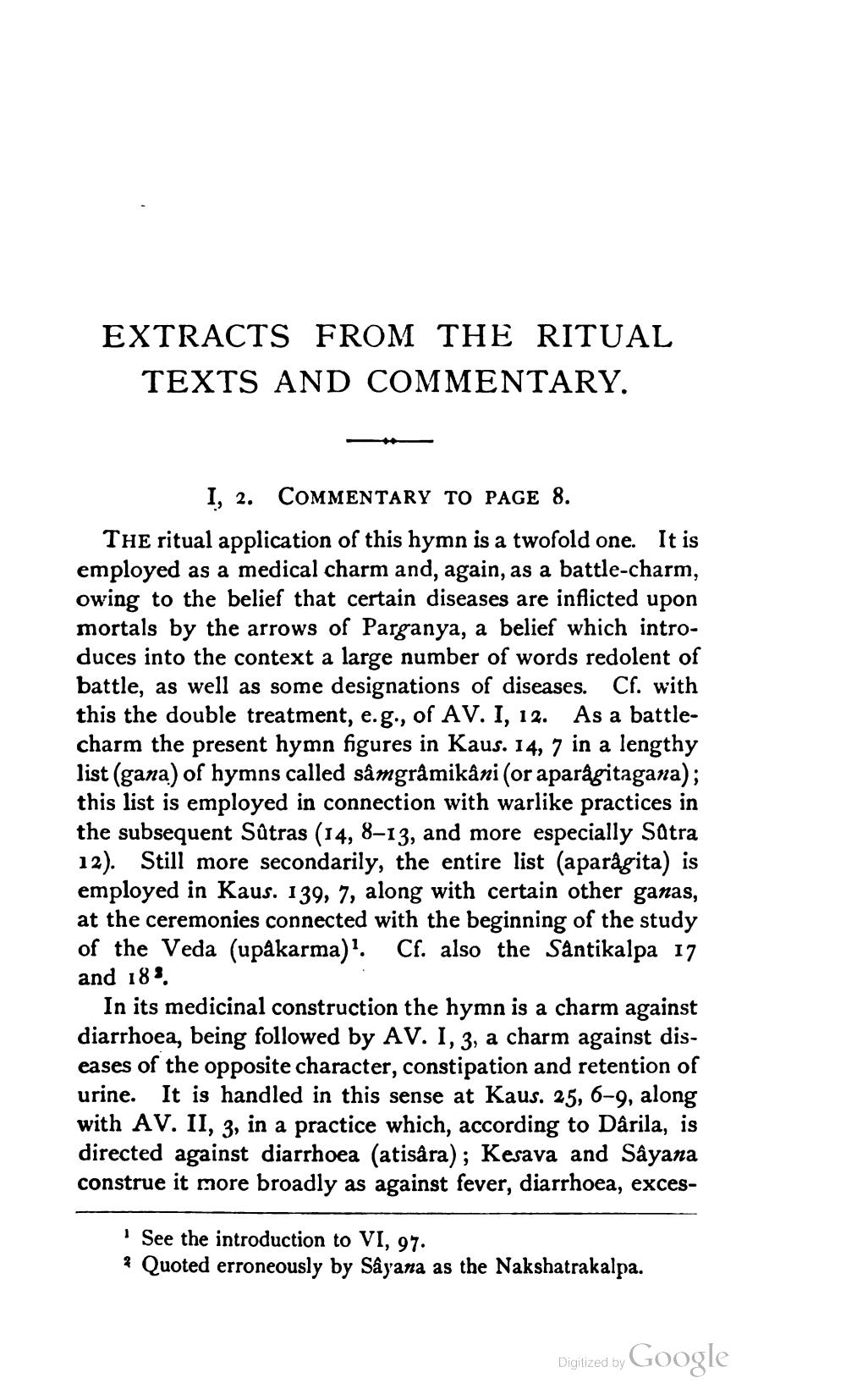________________
EXTRACTS FROM THE RITUAL
TEXTS AND COMMENTARY.
1, 2. COMMENTARY TO PAGE 8. THE ritual application of this hymn is a twofold one. It is employed as a medical charm and, again, as a battle-charm, owing to the belief that certain diseases are inflicted upon mortals by the arrows of Parganya, a belief which introduces into the context a large number of words redolent of battle, as well as some designations of diseases. Cf. with this the double treatment, e.g., of AV. I, 12. As a battlecharm the present hymn figures in Kaus. 14, 7 in a lengthy list (gana) of hymns called sâmgrâmikâni (or aparágitagana); this list is employed in connection with warlike practices in the subsequent Sûtras (14, 8–13, and more especially Satra 12). Still more secondarily, the entire list (aparågita) is employed in Kaus. 139, 7, along with certain other ganas, at the ceremonies connected with the beginning of the study of the Veda (upakarma)? Cf. also the Santikalpa 17 and 18%
In its medicinal construction the hymn is a charm against diarrhoea, being followed by AV. I, 3, a charm against diseases of the opposite character, constipation and retention of urine. It is handled in this sense at Kaus. 25, 6-9, along with AV. II, 3, in a practice which, according to Dârila, is directed against diarrhoea (atisára); Kesava and Sayana construe it more broadly as against fever, diarrhoea, exces
"See the introduction to VI, 97. * Quoted erroneously by Sayana as the Nakshatrakalpa.
Digitized by Google




